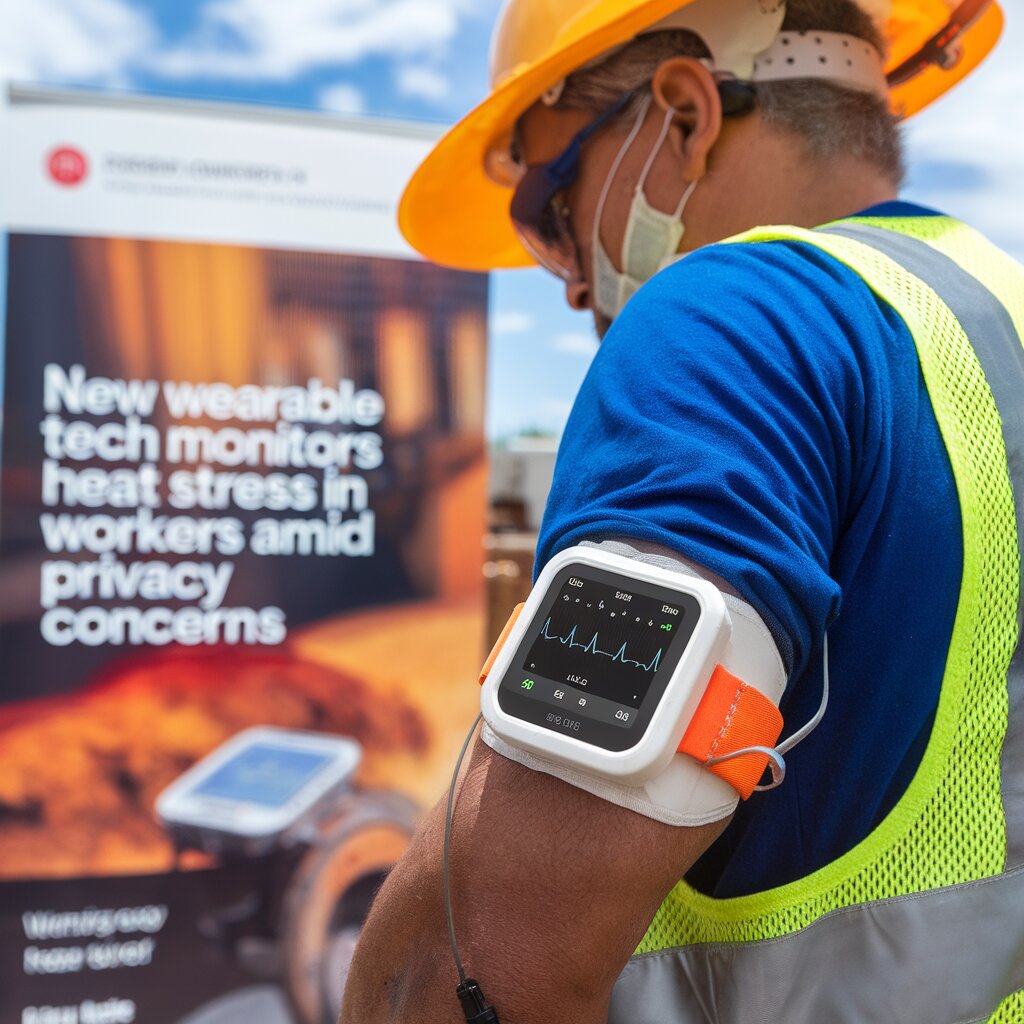In the blistering heat of an Oak Ridge, Tennessee summer, workers clad in full-body protective gear toil to decontaminate a former nuclear facility. Despite the intense conditions, these laborers have no immediate physical respite; instead, they rely on innovative armbands to monitor their physiological status, checking for signs of heat stress through data on heart rates, movements, and exertion levels.
Stephanie Miller, a safety and health manager for a U.S. government contractor engaged in cleanup work at Oak Ridge National Laboratory, keenly observes a computer screen. It displays color-coded bubbles filled with physiological data for each worker, highlighting potential overheating threats in real-time. “Heat is one of the greatest risks that we have in this work, even though we deal with high radiation, hazardous chemicals, and heavy metals,” Miller notes.
With the rise of global temperatures, such wearable technology is increasingly being harnessed by employers to safeguard their workforce. These novel devices, which were initially designed for athletes, firefighters, and military personnel, now estimate core body temperatures and prompt necessary cool-down breaks. The stakes are high— the Atlantic Council estimates that heat-induced productivity losses could cost the U.S. $100 billion annually.
However, the collection of medical data via these wearables has stoked privacy concerns. Critics fear the potential misuse of this data, such as penalizing workers for taking necessary breaks. Travis Parsons, director of occupational safety and health at the Laborers’ Health and Safety Fund of North America, underscores the skepticism workers have about being monitored. “There’s a lot of exciting stuff out there, but there are no guardrails around it,” Parsons emphasizes.
In Tennessee, the cleanup crew at Oak Ridge, employed by United Cleanup Oak Ridge under the U.S. Department of Energy, faces one of the few places with rigorous anti-overheating protocols. In contrast, most American workers lack such protections. A proposed rule by the Biden administration aims to shield 36 million workers from heat-related illnesses, responding to the tragic statistic that 986 U.S. workers died from heat exposure between 1992 and 2022, according to the EPA.
The SlateSafety armbands used by the Oak Ridge workers exemplify how this technology functions. These devices estimate core body temperatures and send alerts when readings hit critical levels. Similarly, employees at a Cardinal Glass factory in Wisconsin utilize these armbands to manage the searing heat generated by a 3000-degree furnace. The investment, though significant upfront, has been justified by the potential reduction in emergency medical costs.
Another company, Epicore Biosystems, offers wearables that analyze sweat to identify risks of dehydration and overheating. “Turns out there’s all this information packed away that we’ve been missing,” says Epicore’s CEO Rooz Ghaffari.
Despite promising developments, the efficacy of these technologies in real-world, variable environments remains under scrutiny. Some experts, like Doug Trout from the National Institute for Occupational Safety and Health, argue that while wearables can aid in reducing heat stress, they must be part of a broader safety strategy that includes access to breaks, shade, and cool water.
Back at Oak Ridge, laborer Xavier Allison recalls a recent episode where his device alerted him mid-task. Unable to leave the hazardous zone without a lengthy decontamination process, Allison had to resort to cooling off in a nearby room. The wearable notified him when he was safe to return to work. “Ever since we implemented it, we have seen a significant decrease in the number of people who need to get medical attention,” Miller observes.
Yet, the collection and prolonged retention of workers’ medical data raise red flags. Adam Schwartz from the Electronic Frontier Foundation cautions that such surveillance could backfire, with employers potentially using the data to deny breaks or even terminate employees based on health information. He recommends that data collection be voluntary, strictly necessary, and promptly deleted to mitigate these risks.
While wearable devices hold promise for improving worker safety in heat-intensive environments, they are no panacea. Juanita Constible from the Natural Resources Defense Council highlights that without fundamental measures like access to water and breaks, the technology’s benefits could be severely limited. “It’s just something extra they have to carry when they’re in the hot fields,” she says, stressing the ongoing need for basic workplace protections.


